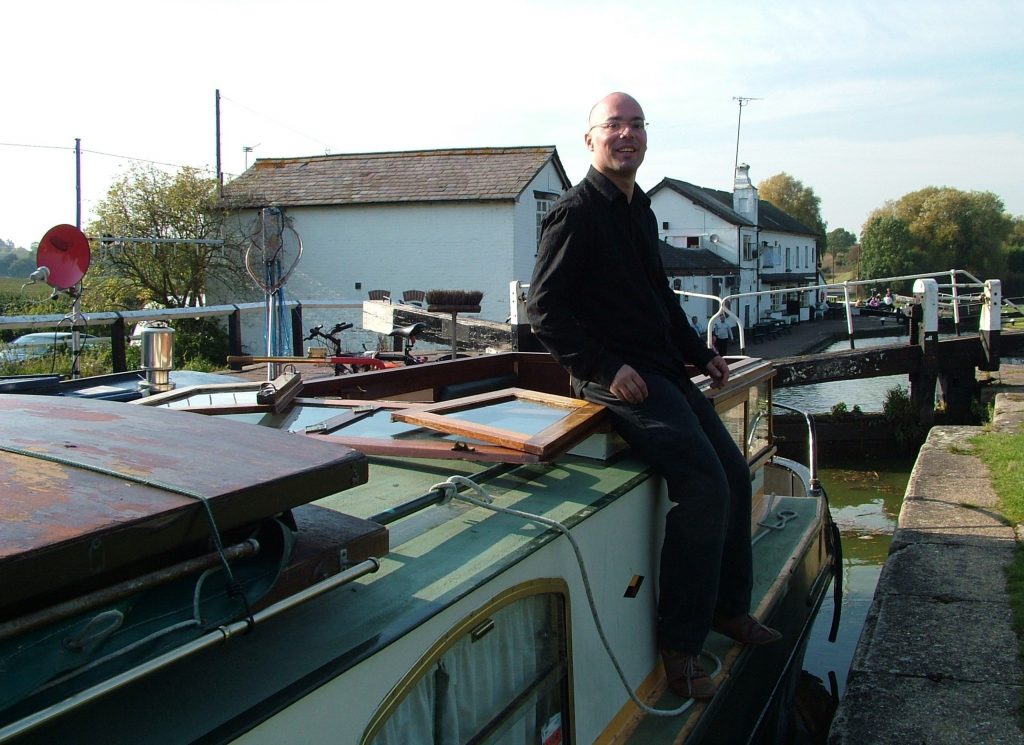
I live alone on my narrowboat and I mostly travel alone. Single-handed boating brings with it particular difficulties and other boaters, passers-by and lock keepers often offer me help when they realise I’m going solo. Many times I politely decline, particularly in locks and particularly if they are non-boaters, because sometimes their assistance is more hassle than it’s worth and if they don’t follow instructions, their actions can even be dangerous.
If I’m mooring in a shallow area or the wind’s blowing the boat away from the towpath then I often shout out to a passerby to ask them to help haul me in. I throw the rope beside, never at them and ask them not to pull hard but to gently lean back and haul me in slowly.
I don’t ask non-boaters to push the bow out when I cast off because some daredevils lean way too far over and I don’t want them falling in.
I’m most appreciative of help when I’m stuck in shallows and another boater is around with a boat pole to push me away from the bank while I rev the engine.
Helpful lock keepers (and so far I’ve only met helpful ones) are always welcome and they know what they’re doing. If they tell me to do something then I don’t question it.
Single-handed boating on the Thames
I’ve found that when going solo through locks on the Thames, the following routine works well for me:
- While waiting for the lock to open I tie the boat up to a bollard using the midline and keep an eye on it. Many boats leave the lock faster than they ought to and their wash can cause my boat to rock and drift. While waiting, I get the stern and bow ropes ready for use.
- I bring the boat into the lock as slowly as possible, remembering that putting her in reverse when next to the lock wall can cause the stern to move out.
- The engine has to be shut off while in the lock and I do that before I step out of the cabin.
- I walk round the gunwhale to the middle of the boat and, if I’m still a few feet away from the edge, throw the midline over a bollard and haul the boat to the side before stepping off.
- Temporarily I keep the midline tied loosely around the bollard while I walk to the front and rear of the boat and put the bow and stern ropes around bollards (not looping or tying them, that could cause an accident as the water level changed) . I then untie the midline, hold the ends of the bow and stern ropes and step onto the roof of the boat.
- Now, as the lock keeper operates the sluices and the water level rises or falls, while stood on top of the boat I can pull lightly on either rope to keep from drifting into the boat next to mine.
- Once the gate opens I coil up the (first bow, then stern) ropes, push the front of the boat away from the side of the lock, step back in the cabin, start the engine and move out slowly.
- I wave and say thanks to the lock keeper.
Recently I had a close call. One evening when the lock keeper was off-duty (they knock off at 7pm) I went through a lock on my own and as the water level rose a rope caught fast on a bollard. The boat tipped over to an angle I never want to see her at again but I stayed calm and emptied the lock as fast as I could. Half the cupboards had emptied of their contents but no other damage was done.
OMG that sounds very scarey indeed!
What do you do when you are going ‘uphill’ solo?
If you are boating out of hours, you can just use the centre line but leave it long and leave the boat in gear at a fast tick over. She should hold herself to the side aslong as you don’t go mad winding open the sluices. The tricky bit is working out how long to leave the line so she doesn’t hang.